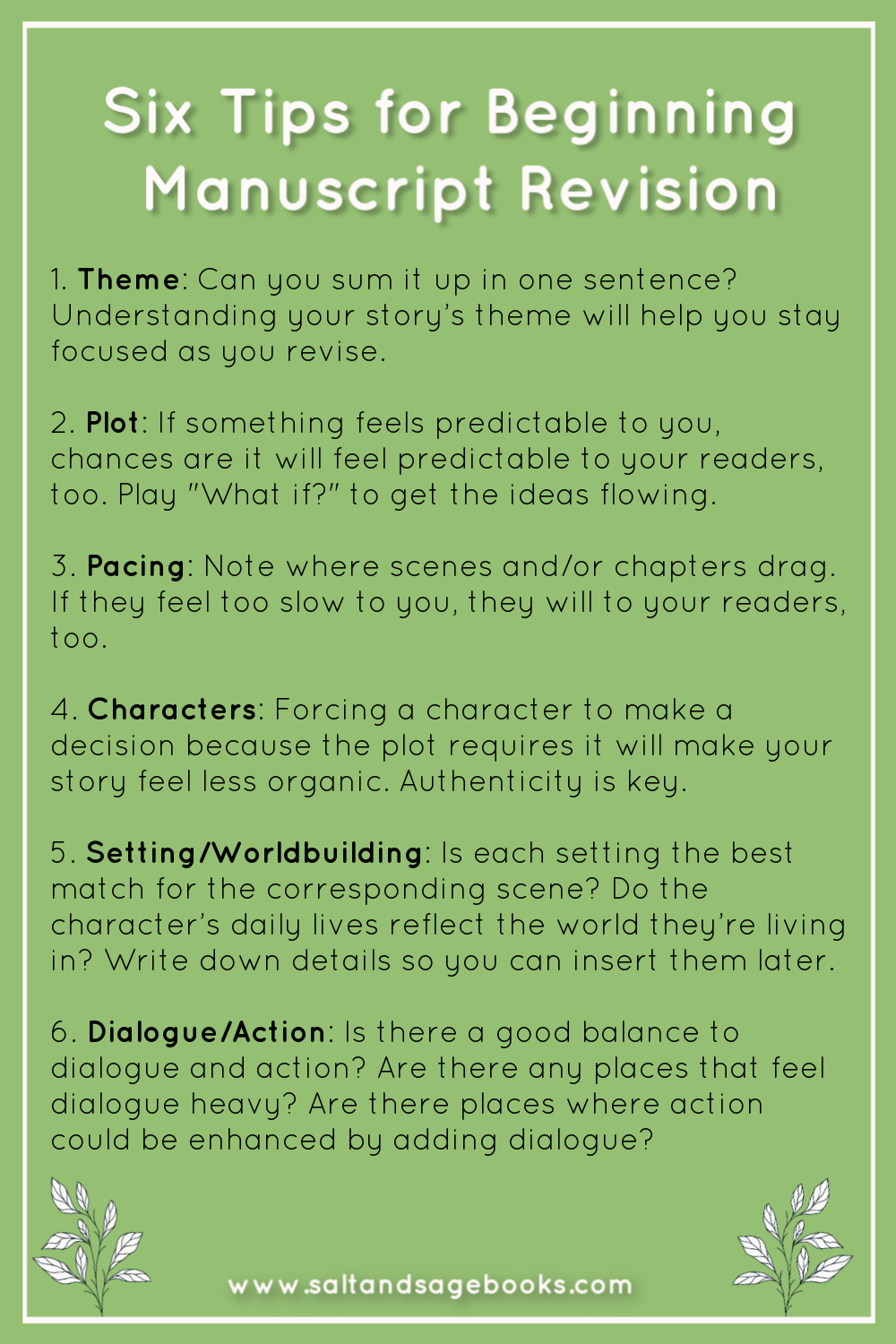This is the second post in a two-part series about what to do after finishing your first draft of a book. Go here to read the first post: Six Tips on Preparing Your Newly Drafted Novel for Revision
You’ve finished writing your book. You’ve prepared your newly drafted novel for revision, and now you’re on the beach and finally ready to begin your first major pass up Revision Mountain.

What next?
Before we break it down, let’s talk for a second about why we should focus on the macro (big picture) during an initial revision, not micro (little picture).
Author Shannon Hale describes the process of drafting a novel this way: “When writing a first draft, I have to remind myself constantly that I’m only shoveling sand into a box so later I can build castles.” Look at your first manuscript revision as molding and stacking the sand so it’s in the shape you want your future sandcastle to be. Then later, you can add the details that will earn you sandcastle-building accolades.

If those steps are out of order, you may be in the middle of creating beautiful scrollwork on your sandcastle and suddenly realize you really want an extra turret or a bigger portcullis. You’ll save yourself a lot of work by shaping your foundational structure before you focus on details.
To help you assess your book’s foundational structure, let’s discuss six areas of macro revision:
Theme
If someone asks you what your story is about, can you sum it up in one sentence? What is your protagonist’s ultimate goal and why? Understanding your story’s theme will help you stay focused on that theme as you revise—even subconsciously. Has the theme changed from what you expected as you set out to write the story?
Plot
Is the plot predictable at any point?
Going with the first idea we have can lead to a feeling of predictability. If we use our very first idea, chances are that’s what readers will also expect to happen next. Which isn’t necessarily a bad thing—after all, predictability is familiar and comfortable—but we don’t want our readers to predict everything and grow bored.
If something feels predictable, try brainstorming at least three more ideas. Use “What if?” as a tool. Like, “What if a shark appeared?” or “What if someone were hiding around the corner?” or “What if a helicopter crash-landed next to them?” You might not use those initial ideas, but they could spark other interesting ones.
Pacing
When you read through your manuscript, note where scenes and/or chapters drag or slow down. If they do, your readers will feel it, too. Take a moment to define the purpose of each chapter and scene.
Does each chapter/scene move the theme forward? Does each chapter begin and end with engaging the reader? Can you end each chapter in a way that leaves the reader with a question or thought that won’t be addressed until they turn the page or later?
Characters
Characters require a lot of macro and micro work. But the more you understand your characters, the clearer their motives and personalities will come through. If you’re unsure about any of your plot points, examine your characters. If you get to know them better, you’ll understand more about why your plot works—or why it needs help.
What big things do your characters want and why do they want them? Do any characters make choices that don’t fit their personalities?
Ensure that your characters have believable reasons for all of their decisions. Forcing a character to make a decision because the plot requires it will make your story feel less organic and less authentic. Plot must grow organically from the decisions characters make, or it can feel contrived.
Setting/Worldbuilding
Is each setting the best match for the corresponding scene? Why/why not? Is it interesting? Could it be set in a different place to add interest/excitement? Is the world big/deep enough? Do the character’s daily lives reflect the world they’re living in? How can the setting/world be developed further to enhance the storyline?
While you’ll eventually layer in worldbuilding and setting details, right now is the time to decide whether or not those structures need work. Keep notes on details that come to you so you can insert them later.
Dialogue/Action
Is there a good balance to dialogue and action? Are there any places that feel dialogue heavy? Are there places where there is too much action that could be broken up by adding dialogue? Some genres will be more dialogue heavy, and some will have more action. You can discover your manuscript’s balance by color coding scenes or using Darcy Pattison’s Shrunken Manuscript technique. Just highlight action and dialogue in two different colors before printing, or use highlighters after printing.
Here’s a list you can print and put next to your computer to help you remember these steps as you begin your climb up Revision Mountain. You can do it! And when you’re ready for the help of a professional—whether you need assistance now or several revision passes in the future—we are here for you!

















